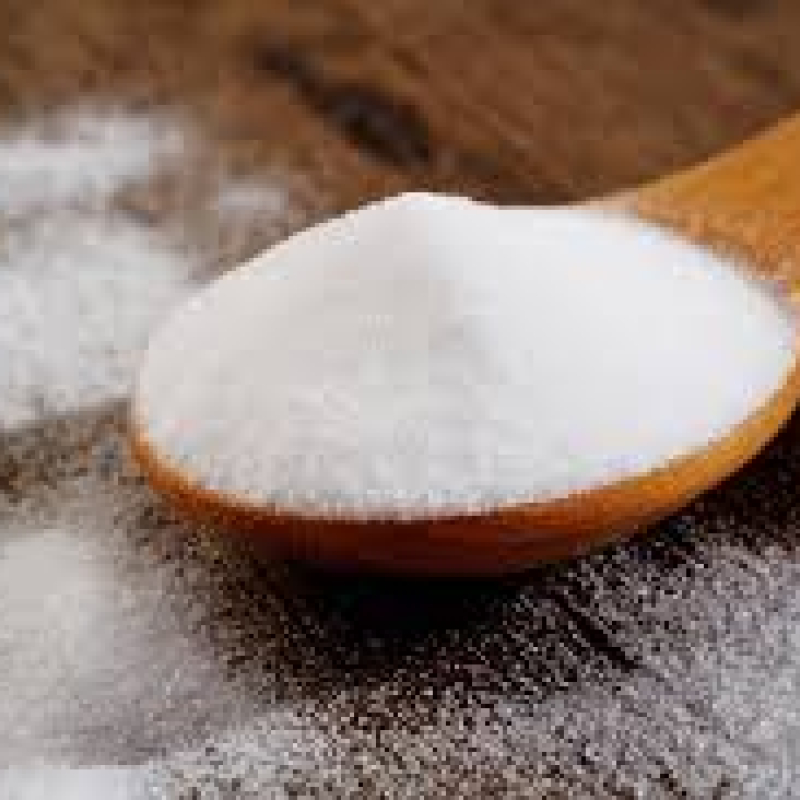Products Description of Sodium Hydroxymethanesulphinate CAS#149-44-0Sodium bisulfite formaldehyde is translucent white orthorhombic crystals or small pieces. Apparent density 1.80~1.85g/cm3. Easily soluble in water, slightly soluble in alcohol. It has extremely strong reducing properties under high temperature and can make the dyed color disappear, so it is known as the chemical book of hanging white blocks. It decomposes when exposed to acid, and decomposes at 120°C to produce toxic gases such as formaldehyde and hydrogen sulfide.
Contact Now
Products Description of Sodium cocoyl isethionate CAS#61789-32-0Sodium Cocoyl Isethionate (SCI) is a mild, foaming and highly stable anionic surfactant. SCI has excellent hard water resistance, very low toxicity and good biodegradability.
Contact Now
Products Description of Sodium amide CAS#7782-92-5Sodium amide, also known as sodium amide or sodium ammonia, is a white or olive green crystalline powder with an ammonia smell. Its chemical formula is NaNH2, its molecular weight is 39.01, its melting point is 210℃, and its boiling point is 400℃. It decomposes into sodium, nitrogen and hydrogen when heated to 500-600℃. It reacts violently with water to form sodium hydroxide and release ammonia gas. It is slightly soluble in liquid ammonia and reacts slowly with alcohol.
Contact Now
Products Description of Sodium allylsulfonate CAS#2495-39-8Sodium allylsulfonate, the molecular formula is C3H5SO3Na, and the molecular weight is 144.1.Sodium allylsulfonate Chemical PropertiesMelting point 242 °C (decomp)density 1.206vapor pressure 0Pa at 25℃storage temp. Inert atmosphere,Room Temperaturesolubility soluble in Alcohol, Dimethylformamideform PowderSpecific Gravity1.25color WhiteWater Solubility 4 g/100 mLHydrolytic Sensitivity0: forms stable aqueous solutionsStability:Stable.
Contact Now
Products Description of Sodium dimethyldithiocarbamate CAS#128-04-1The pure product of sodium fumarate is a scaly white crystal, which is very soluble in water. The crystals obtained by the crystallization method contain 2.5 molecules of crystal water. When heated to 115°C, 2 molecules of crystal water are lost, and at 130°C, the crystal water is completely lost. The industrial intermediate is a 15% aqueous solution, which is a light yellow or grass green transparent liquid with a relative density of 1.06 and a pH of 9 to 11.
Contact Now
Products Description of Sodium Hydroxide CAS#1310-73-2Sodium hydroxide, also known as caustic soda and caustic soda, has the chemical formula NaOH. It is a highly corrosive strong base, usually in white flakes or granules. It can be mixed with water to form an alkaline solution, and can also be dissolved in methanol and ethanol. This alkaline substance is deliquescent and will absorb water vapor in the air, as well as acidic gases such as carbon dioxide. Sodium hydroxide is one of the commonly used chemicals.
Contact Now
Products Description of Sodium Sulfide CAS#1313-82-2 Sodium sulfide is also known as alkali sulfide, stinking soda, and stinking alkali. The pure product is colorless or slightly purple prismatic crystals at room temperature. Industrial sodium sulfide is often pink, brownish red, or khaki blocks due to impurities. It has the smell of rotten eggs, is corrosive, and toxic. The density is 2.427. It decomposes at 920°C. It is soluble in cold water and easily soluble in hot water.
Contact Now
Products Description of Sodium lauroylsarcosinateCAS#137-16-6Sodium lauroyl sarcosinate, also known as sodium lauroyl-N-methylaminoacetate and sodium lauroyl-N-methylglycinate. The main functions of sodium lauroyl sarcosinate in cosmetics and skin care products are antistatic, foaming agent, detergent, and surfactant. The risk factor is 3, which is relatively safe and can be used with confidence. It generally has no effect on pregnant women. Sodium lauroyl sarcosinate is not acne-causing.
Contact Now
roducts Description of Sodium Monohydrate CAS#10039-56-2Sodium hypophosphite, also known as "sodium dihydrogen hypophosphite" and "sodium hypophosphite", has the chemical formula NaH2PO2. It is a colorless crystal or a pearly crystal or a granular powder. It is soluble in water, alcohol and glycerin, but insoluble in ether. It is easy to deliquesce. It is relatively stable when stored in a dry state. When heated above 200°C, it will decompose rapidly, releasing phosphine, a toxic gas that can self-ignite.
Contact Now
Products Description of Sodium hexametaphosphateCAS#10124-56-8This product is a white crystalline powder with a specific gravity of 2.484 (20°C). It is easily soluble in water but insoluble in organic solvents and has a strong hygroscopic function.
Contact Now
Products Description of Sodium chlorite CAS#7758-19-2Liquid sodium chlorite is a white or slightly yellow-green aqueous solution, alkaline, and slightly hygroscopic. It is easily soluble in water and alcohol. Sodium chlorite is relatively stable at room temperature and under normal storage conditions. It is easy to decompose and release chlorine dioxide gas when it comes into contact with acid.
Contact Now
Products Description of Sodium tripolyphosphateCAS#7758-29-4 Sodium tripolyphosphate, also known as pentasodium phosphate, sodium pyrometaphosphate, STPP, pentasodium tripolyphosphate. White powdery crystals, good fluidity, relative molecular mass 367.86, melting point 622℃, easily soluble in water, its aqueous solution is alkaline. Commonly used in food as a moisture retainer, quality improver, pH regulator, metal chelator.The aqueous solution of sodium tripolyphosphate is weakly alkaline (the pH value of a 1% aqueous solution is about 9.7).
Contact Now
Products Description of Sodium benzoate CAS#532-32-1In 1870, when British scientist H. Fleck was looking for an acid to replace the well-known salicylic acid, he first described the antiseptic effect of benzoic acid. He established the antiseptic effect of this substance. Since the safety research of sodium benzoate was not in-depth at that time and the production technology was not mature enough, it was not used for food preservation until the beginning of this century. Since then, it has become one of the most used preservatives in the world because of its low price.
Contact Now
Products Description of Sodium hydroxide CAS#1310-73-2Sodium hydroxide, also known as caustic soda and caustic soda, has the chemical formula NaOH. It is a highly corrosive strong base, usually in white flakes or granules. It can be mixed with water to form an alkaline solution, and can also be dissolved in methanol and ethanol. This alkaline substance is deliquescent and will absorb water vapor in the air, as well as acidic gases such as carbon dioxide. Sodium hydroxide is one of the commonly used chemicals.
Contact Now
Products Description of Sodium hydroxide CAS#1310-73-2Sodium hydroxide, also known as caustic soda and caustic soda, has the chemical formula NaOH. It is a highly corrosive strong alkali, usually in the form of white flakes or granules. It can be miscible with water to form an alkaline solution, and can also be dissolved in methanol. and ethanol. This alkaline substance is deliquescent and will absorb water vapor in the air as well as acidic gases such as carbon dioxide. Sodium hydroxide is one of the commonly used chemicals.
Contact Now
Products Description of Sodium polyphosphateCAS#68915-31-1Colorless transparent glass block or flake. Soluble in water, insoluble in organic solvents. Strong hygroscopicity, easily hydrolyzed into orthophosphate in warm water, acid or alkali solution.
Contact Now
Sodium formate CAS#141-53-7The main purpose of sodium formate as follows:Sodium formate can be used as chemical analysis reagent, used for determination of arsenic and phosphorus, also used as a disinfectant, mordant and so on.
Contact Now
Products Description of Ganciclovir sodium CAS#107910-75-8Ganciclovir sodium is an analog of 2′-deoxyguanine nucleotide that can inhibit the replication of herpes viruses. Its mechanism of action is: ganciclovir is first phosphorylated into monophosphate by a protein kinase homolog encoded by CMV (UL97 gene), and then further phosphorylated into diphosphate and triphosphate by cellular kinases. In CMV-infected cells, the level of triphosphate is 100 times higher than that in non-infected cells, indicating that this product can be preferentially phosphorylated in infected cells.
Contact Now
Products Description of Sodium Perborate Monohydrate CAS#10332-33-9As a highly efficient and stable oxygen-based bleach, sodium perborate monohydrate is widely used in laundry detergents, color bleaching powders, and dishwashing agents.
Contact Now
Products Description of SODIUM TRISILICATE CAS#13870-30-9Sodium silicate is a water-soluble silicate, which can be divided into three forms: solid, liquid, and water-quenched. In theory, this type of substance is called "colloid". Industrial solid sodium silicate is a colorless, slightly light blue, turquoise, sky blue or yellow-green transparent or translucent glass block. When the impurity content is very low, the glassy anhydrous solid sodium silicate is a colorless and transparent glass body, and pure solid sodium cinnamate is a colorless and transparent solid.
Contact Now
Products Description of Sodium mercaptobenzothiazole CAS#2492-26-4Sodium 2-Mercaptobenzothiazole is a compound with a molecular weight of 189.22 and a molecular formula of C7H4NNAS2.Sodium mercaptobenzothiazole Chemical PropertiesMelting point -6 °CBoiling point 103 °Cdensity 1,255 g/cm3vapor pressure 0Pa at 25℃storage temp. under inert gas (nitrogen or Argon) at 2-8°Cform liquidcolor White to Orange to GreenWater Solubility >=10 g/100 mL at 20 ºCCAS DataBase Reference2492-26-4(CAS DataBase Reference)EPA Substance Registry SystemSodium mercaptobe
Contact Now
Products Description of Sodium hexafluorophosphate CAS#21324-39-0Sodium hexafluorophosphate is also called "sodium hexafluorophosphate (V) acid". Chemical formula NaPF6·H2O. Molecular weight 185.97. White powder. Sensitive to air and carbon dioxide, relative density 2.36919. Very soluble in water. Decomposes at high temperature.
Contact Now
Products Description of Sodium MethoxideCAS#124-41-4Sodium methoxide is also called sodium methoxide. It is a kind of alcohol salt generated by methanol, with the chemical formula CH3ONa. It is a strong base commonly used in organic synthesis. Sodium methoxide is usually stored as a solution in alcohol solvents such as methanol and ethanol. It dissolves in ether to form a suspension, is sensitive to moisture, and decomposes into methanol and sodium hydroxide when it comes into contact with water: CH3ONa+H2O→CH3OH+NaOH. Sodium methoxide products come in two forms: solid and liquid.
Contact Now
Products Description of Sodium chloroacetateCAS#3926-62-3White powder. Solubility in water at 20℃ is 85g/100ml. Slightly soluble in methanol, insoluble in ether, benzene, acetone and carbon tetrachloride. Toxicity: Oral LD50 in rats is 75mg/kg.
Contact Now


































